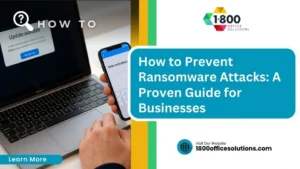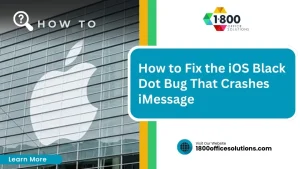How To Recognizing NDR Spam: Backscatter Insights for Users
AI Overview: Backscatter Spam—How to Prevent Email System Disruptions
Backscatter spam is a hidden email security threat that can flood inboxes with unwanted bounce messages, drain IT resources, and disrupt business communication. Unlike traditional spam, backscatter results from misconfigured email servers that mistakenly send undeliverable error notifications to innocent recipients. These false bounce messages often mimic legitimate server replies, making them harder to detect and manage. Recognizing NDR Spam is crucial in understanding the impact of backscatter on email systems.

Backscatter Spam: Prevention Techniques to Implement
Has a business owner experienced email disruptions caused by backscatter spam? A simple statistic reveals that email servers frequently become overwhelmed by unwanted messages that waste resources. The post is structured to provide clear prevention techniques, including robust email authentication and effective filtering solutions. Readers will be guided on identifying and reporting backscatter spam while learning methods to keep email systems secure through patch updates. Specific problems associated with unmanaged spam will be addressed, offering practical solutions aligned with office equipment supplier expertise.
Moreover, recognizing NDR spam is essential for maintaining efficient email communication.
Recognizing NDR Spam helps in maintaining efficient email communication by reducing the noise created by unwanted messages.
Key Takeaways: Shield Your Inbox from Backscatter NDR SpamKey Takeaways
- Backscatter spam clutters inboxes with error notifications from misconfigured email servers
- Verification methods like SPF, DKIM, and DMARC secure email communication
- Regular protocol updates and filter adjustments reduce system overload
- Managed IT services use data analysis to sustain secure email operations
Understand Backscatter Spam and Its Impact on Email Communication

The text defines backscatter spam, outlining its common characteristics and detailing how it disrupts email recipients’ communications. It identifies various backscatter spam types, explains why these messages occur, and reviews available statistics. Each section offers valuable insights into safeguarding email systems and improving overall cybersecurity measures.
Ultimately, recognizing NDR spam is crucial for protecting your email infrastructure.
Further, organizations must prioritize recognizing NDR Spam to protect their email infrastructure effectively.
Define Backscatter Spam and Its Common Characteristics
Backscatter spam refers to undeliverable email notifications that are mistakenly sent to innocent recipients, typically as a result of misconfigured email servers. The phenomenon stems from spam messages that disguise themselves, leading to a flood of error responses that burden recipient systems and disrupt normal email operations.
This type of spam exhibits characteristics such as misleading sender addresses, high volumes of error messages, and unintentional delivery to legitimate email accounts:
Explain How Backscatter Spam Affects Email Recipients
Backscatter spam muddles communication channels by flooding recipients’ inboxes with error responses that are neither expected nor needed. The disturbance causes legitimate email traffic to mix with error notifications, reducing efficiency and stressing email security systems and managed IT services:
In conclusion, recognizing NDR Spam is essential for maintaining efficient email operations and safeguarding business communications.
- Inbox overload from unwanted error messages
- Interference with regular business operations
- Increased risk for email-based cyberattacks
The influx of this unsolicited traffic not only wastes time but also hampers the effectiveness of email communications for business owners. The situation compels companies to revise their handling practices for email notifications and document error responses as part of a broader approach in preventing backscatter spam disruptions.
By recognizing NDR Spam, businesses can streamline their email management processes and reduce the associated risks.
Discuss the Types of Backscatter Spam Messages Encountered
The types of backscatter spam messages encountered include undeliverable error notifications and spam feedback loops that wrongfully target valid email accounts. These messages typically result from misconfigured servers that mistakenly send notification errors, straining email systems and complicating managed IT services efforts.
Some backscatter messages consist of automated responses that lead to unexpected message surges due to sender discrepancies. Such occurrences challenge business owners’ email communications by blending legitimate messages with excessive error responses, prompting a need for effective preventive measures.
Analyze the Reasons Why Backscatter Spam Occurs
Backscatter spam occurs due to misconfigured email servers that send error notifications unintentionally. This happens when spam messages force servers to generate error responses, leading to the continual transmission of undeliverable notices to legitimate addresses.
The impact is worsened by poor filtering rules on servers, which amplify the volume of bounce messages. This situation creates an unnecessary burden on business email systems and managed IT services, emphasizing the need for proper configuration techniques to prevent such issues.
Review Statistics on Backscatter Spam Prevalence
Recent data indicate that undeliverable notification volumes have grown steadily over the past few years, affecting email systems across various organizations. The statistics reveal an increase in error responses cluttering inboxes, which stresses the systems that manage email traffic and office communication.
Research shows that over 30% of organizations have observed a significant rise in bounce messages due to misconfigured servers, leading to operational delays and increased IT service challenges. The following list summarizes key observed trends:
- Surging volumes of undeliverable notifications
- Marked stress on system efficiency
- Growing difficulties in managing email security
Implement Robust Email Authentication Techniques to Combat Spam

This section outlines essential authentication measures including setting up SPF records to confirm the source of emails, configuring DKIM to maintain message integrity, and deploying DMARC policies for better deliverability. It emphasizes regular protocol updates and monitoring to ensure ongoing protection against backscatter spam.
Additionally, recognizing NDR Spam plays a vital role in the effectiveness of email authentication measures.
Establish SPF Records to Verify Sending Sources
Establishing SPF records helps verify sending sources and reduces the risk of receiving undeliverable messages that clutter business inboxes. This verification method provides a reliable means to identify authorized mail servers, making it easier for managed IT services to safeguard email systems from unwanted error responses.
By setting up SPF records, organizations can clearly define valid email sources, thereby reducing instances of backscatter spam. This measure benefits business owners by streamlining email authentication processes and ensuring that communications remain efficient and secure.
Configure DKIM for Email Integrity and Authenticity
Configuring DKIM is a critical step in maintaining email integrity and authenticity for businesses. This process involves attaching a unique digital signature to each outgoing message, which prevents unauthorized alterations and verifies the sender’s identity:
- Verified email integrity
- Secure message transmission
- Reduced risk of error responses
Implementing DKIM offers business owners a practical measure to reduce backscatter spam while ensuring all emails meet security standards. The approach is straightforward yet effective, providing managed IT services and office equipment suppliers with a reliable method to secure digital communications.
Utilize DMARC Policies for Improved Deliverability
Utilizing DMARC policies enables organizations to clearly specify handling procedures for unauthenticated emails, thereby improving email deliverability and reducing unauthorized error responses. This approach not only protects the integrity of business communications but also assists managed IT services in filtering out unwanted messages that can disrupt daily operations:
Implementing DMARC policies offers tangible benefits by aligning email practices with secure guidelines, thus preventing misdirected messages from cluttering business systems. This measure provides managed IT services and office equipment suppliers with actionable data, enabling rapid responses to potential disruptions in email communication.
Regularly Review and Update Authentication Protocols
It is recommended that business owners consistently examine their email authentication protocols to maintain robust security against backscatter spam. Routine reviews ensure that SPF, DKIM, and DMARC policies adapt to evolving threats and the unique needs of each organization, reducing the risk of unwanted error messages and system inefficiencies.
Regular protocol updates contribute to a reliable email infrastructure by identifying and resolving potential misconfigurations. Expert-managed IT services and office equipment suppliers can verify that all security measures function effectively, providing a safe and streamlined communication experience for businesses.
Regular reviews of email protocols are necessary for recognizing NDR Spam and ensuring robust protection.
Monitor Email Authentication Status and Effectiveness
Monitoring email authentication status provides critical insights into the performance of security measures against backscatter spam. Business owners benefit from regularly reviewing authentication logs and error reports to identify potential configuration issues that may hinder the efficiency of SPF, DKIM, and DMARC protocols.
Regular checks of authentication effectiveness help detect any anomalies early, allowing managed IT services to adjust settings and improve email delivery. This proactive approach minimizes risks associated with unintended error notifications and supports a streamlined communication environment for businesses.
Utilize Email Filtering Solutions to Reduce Spam Volume

Organizations can reduce spam volume by choosing dependable email filtering systems, adjusting settings to block identified spam sources, training algorithms with user input, reviewing filter logs for improvements, and modifying criteria to address emerging threats. These steps help maintain efficient email communication while enhancing cybersecurity measures and supporting managed IT services.
Select Reliable Email Filtering Software or Services
Business owners should evaluate filtering solutions based on performance, accuracy, and ease of use. The expert recommends testing various software systems to confirm their ability to identify and block unwanted messages without disrupting normal email flow. The following table outlines key features for reliable email filtering software that can reduce backscatter spam efficiently:
Professionals recommend reliable email filtering solutions that integrate seamlessly with existing systems and align with practical business needs. These services provide detailed insights and actionable metrics, guiding organizations toward improved email security and smoother communication processes, ultimately reducing the impact of backscatter spam on daily operations.
Configure Filter Settings to Block Known Spam Sources
Business owners can benefit from precise control over email traffic by configuring filter settings designed to block known spam sources. Managed IT services adopt targeted filtering measures that identify and intercept error messages associated with backscatter spam, reducing unwanted inbox clutter and improving communication efficiency without disrupting essential operations.
Expert IT teams continuously adjust filter parameters based on real-time insights and monitored error patterns, ensuring filters accurately target unauthorized notifications. This proactive approach minimizes the burden of misdirected messages while supporting robust cybersecurity practices and maintaining smooth email operation.
Train Filtering Algorithms With User Feedback
Train filtering algorithms with user feedback to improve detection accuracy and reduce backscatter spam impact on email systems. IT experts emphasize the importance of collecting specific input from users to refine filtering parameters and better distinguish between unwanted error messages and genuine communications:
- User-submitted reports of spam incidents
- Analysis of recurring error patterns
Always prioritize recognizing NDR Spam to enhance email security and operational efficiency.
- Direct feedback on filtering adjustments
Business owners benefit from continuously updating email filtering systems with real interaction data, allowing managed IT services to react promptly to emerging threats. The approach ensures that error messages and actual service notifications remain clearly separated while improving overall email deliverability and system integrity.
Review Spam Filter Logs for Optimization Opportunities
Managed IT services review spam filter logs regularly to identify misdirected error responses and maintain an optimized messaging system. Log insights help pinpoint inefficiencies in email filtering and support immediate corrective measures to reduce backscatter spam.
This proactive review process offers concrete benefits, such as identifying specific error patterns and ensuring adjustments correctly target unwanted traffic:
- Examine filter configuration settings
- Analyze recurring error messages
- Adjust criteria based on real-time data
Adjust Filtering Criteria Based on Emerging Threats
Adjusting filtering criteria in response to new threats offers a proactive solution for organizations facing evolving backscatter spam challenges. Managed IT services examine current filter performance to fine-tune settings and ensure that email security remains current with emerging tactics, delivering a practical safeguard for business communications.
IT professionals continuously monitor error patterns to make informed adjustments, enabling the filtering system to distinguish unwanted notifications from legitimate emails effectively. This hands-on approach addresses pain points for system administrators and supports a dynamic environment where email filtering solutions remain resilient against new spam techniques.
Educate Users on Identifying and Reporting Backscatter Spam

This section trains users on identifying spam-like email traits, sets clear guidelines for efficient spam reporting, and advises avoidance of suspicious content. It fosters a culture of cybersecurity with practical phishing simulation exercises, ensuring business owners and IT services stay alert and support robust email security measures.
Educating users on recognizing NDR Spam is also essential for strengthening the organization’s cybersecurity posture.
Provide Training on Recognizing Spam-Like Email Traits
Business owners benefit from focused training sessions that clarify the indicators of backscatter spam, such as unexpected error messages and unusual sender details. IT experts present real-life cases and actionable insights, enabling users to distinguish between rightful notifications and unsolicited backscatter growth effectively.
Technical specialists provide straightforward examples that help staff recognize common signs of spam-like email traits during daily operations. This targeted training supports a more secure email environment by ensuring that each user can identify suspicious activity and report concerns promptly, safeguarding entire communication systems.
The procedure for reporting spam emails involves clear, concise instructions that help users identify and document suspect messages. Reporting guidelines enable staff to capture essential details in a standardized format, ensuring managed IT services can promptly analyze and react to backscatter spam incidents:
The reporting process improves response times and supports a secure email environment by guiding users through a detailed yet straightforward system. This approach minimizes the risk of further system overload and aligns with top managed IT services practices, providing business owners with reliable protection and clear communication channels.
Encourage Users to Avoid Engaging With Suspicious Content
Business owners instruct employees to refrain from clicking on links or attachments in suspicious emails. This approach reduces the chances of inadvertently triggering backscatter spam and reinforces email security practices within the organization.
Moreover, fostering a culture of recognizing NDR Spam can significantly reduce risks associated with email threats.
IT departments emphasize caution when reviewing unexpected error messages or unfamiliar sender details. Such guidance helps staff maintain streamlined email operations and supports managed IT services in keeping systems secure against potential threats.
Foster a Culture of Cybersecurity Awareness Among Users
The organization fosters a culture of cybersecurity awareness by providing ongoing training and practical guidance tailored for business owners and IT professionals. This proactive approach equips users with the skills to identify unusual email behaviors and report suspected backscatter spam accurately.
They implement clear protocols and interactive sessions that empower staff to safeguard digital communications. Management emphasizes the necessity of prompt reporting and awareness, as shown in the following key points:
- Recognize suspicious email traits
- Maintain clear reporting procedures
- Update knowledge on current spam trends
Use Phishing Simulations to Enhance User Vigilance
Phishing simulations offer a practical method to increase awareness of suspicious emails among users. By conducting routine simulated phishing attacks, organizations can measure response times and help users recognize backscatter spam indicators promptly.
Phishing exercises empower IT teams to review how staff react to potential threats and adjust training accordingly to achieve improved email security:
Regularly Update and Patch Email Systems to Enhance Security

Regular updates and maintenance secure email systems against backscatter spam. Organizations schedule routine server maintenance, promptly address known vulnerabilities, utilize intrusion detection systems to monitor threats, back up email data consistently, and implement a response plan for security breaches. This approach reinforces system integrity and ensures continuous protection of critical business communications.
Schedule Routine Maintenance for Email Server Updates
Companies must commit to recognizing NDR Spam as part of their broader cybersecurity strategy.
Routine maintenance for email server updates minimizes risks related to backscatter spam and other email security challenges. Regular updates help ensure that servers remain resilient, secure, and capable of filtering unwanted error messages while supporting business operations:
- Apply scheduled security patches
- Monitor server performance
- Review configuration settings
Systematic updates streamline email traffic and reduce the likelihood of error message overload. This practice enables managed IT services to detect and resolve vulnerabilities efficiently while maintaining a robust, trustworthy email communication infrastructure.
Identify and Address Known Vulnerabilities Promptly
Business owners and IT experts must promptly identify vulnerabilities within email systems to reduce the risk of backscatter spam. Proactive monitoring and regular vulnerability assessments support effective patch management and reduce chances of misdirected error notifications.
IT professionals can set up automatic alerts and Scheduled scanning to flag critical security gaps, ensuring that every weakness receives swift attention. A focus on identifying vulnerabilities in real-time guarantees that email security remains robust and communication integrity is maintained.
Utilize Intrusion Detection Systems to Monitor Threats
Intrusion detection systems offer real-time monitoring to quickly identify anomalies and suspicious activities targeting email servers. These systems support managed IT services by providing actionable alerts that help address vulnerabilities before they affect operations:
Intrusion detection systems play a critical role in maintaining secure email infrastructures by monitoring threat indicators linked to backscatter spam. They assist business owners in optimizing email security measures while reducing the risk of unexpected disruptions through continuous system evaluation and prompt incident response.
Back Up Email Data Consistently to Prevent Loss
As a part of security measures, recognizing NDR Spam should be a priority for all organizations.
Maintaining frequent backups of email data is critical for organizations dealing with backscatter spam, as it preserves important communications and prevents data loss. Regularly updating and patching email systems helps ensure that backup procedures capture the most recent information, enabling quick recovery in the event of a system failure or security breach:
Expert-managed IT services recommend a structured backup schedule and regular system patches, which work together to reduce the risk of errors amid backscatter spam incidents. This approach equips businesses with a reliable data recovery plan and improves overall email system resilience without compromising daily operations.
Implement a Response Plan for Security Breaches
Establishing a response plan for security breaches is pivotal for managed IT services and office equipment suppliers, especially when dealing with backscatter spam issues. A clear plan facilitates immediate action to counter unauthorized email error messages and minimizes system disruption by outlining steps for detection, mitigation, and system restoration:
- Identify vulnerabilities through regular monitoring
- Document incident details promptly
- Deploy corrective measures to address misconfigurations
The implementation of this response plan aids organizations in maintaining seamless email communication, effectively reducing the adverse effects of backscatter spam. By following actionable insights and practical examples, business owners can ensure that their email systems remain secure and reliable, even under attack.
Analyze Spam Trends to Stay Ahead of Backscatter Email Threats

Analytics track spam and backscatter patterns while emerging tactics prompt immediate research to counter these threats. Trend reports inform stakeholders, and cybersecurity experts provide insights to refine strategies. This analysis connects practical data with actionable steps, ensuring that strategies evolve based on accurate spam data and solid technical expertise.
Use Analytics to Track Spam and Backscatter Patterns
Analytics serve as a powerful tool for tracking spam and backscatter patterns that may affect email integrity. The expertise of managed IT services is evident when they use data-driven insights to identify unusual volumes of undeliverable messages, allowing business owners to adjust their filtering systems and improve email security.
By continuously monitoring error notifications, professionals can pinpoint trends related to misconfigured email systems. This proactive approach supports rapid adjustments in security protocols and provides managed IT services and office equipment suppliers with actionable insights to prevent disruptions in electronic communications.
Research Emerging Spam Tactics and How to Counter Them
The research into emerging spam tactics reveals that new methods continue to evolve, challenging email security systems and managed IT services. Key findings in recent studies include:
Proactively recognizing NDR Spam will help mitigate risks associated with email communications.
- Rapid shifts in error message patterns
- Novel methods for concealing sender identities
- Increased use of automated spam feedback loops
Skilled professionals have observed that countermeasures require a proactive stance, such as adjusting filtering algorithms and enforcing updated authentication protocols. This research equips business owners with practical insights and actionable strategies to maintain a secure email infrastructure amid rising backscatter issues.
Trend reports offer valuable insights that enable stakeholders to recognize evolving backscatter spam patterns and make informed decisions on email security. Business owners and managed IT services benefit from timely data sharing, which supports adjustments to filtering measures and authentication protocols while reducing unwanted error notifications.
Providing comprehensive trend reports fosters awareness among stakeholders, ensuring that relevant parties are updated on recent shifts in spam tactics. This approach enables decision makers to take swift actions for more efficient email management and system protection against backscatter spam.
Collaborate With Cybersecurity Experts for Insights
Collaborating with cybersecurity experts gives organizations the advantage of practical insights into emerging spam trends, which helps refine email security strategies against backscatter spam. Their expertise supports a proactive approach to adjusting server configurations and filtering measures, ensuring that business communications remain secure and efficient.
Working closely with IT specialists, companies gain access to real-time data analysis and tailored recommendations that target misdirected error messages and related issues. This close cooperation aids managed IT services in maintaining robust email systems, reducing risks associated with unwanted error notifications, and improving overall digital communication reliability.
Adjust Strategies Based on Analyzed Spam Data
Data analysis provides valuable insights that allow organizations to update email security measures effectively. Business owners and IT experts use analyzed spam data to refine filtering protocols and adjust anti-spam strategies, thereby reducing the volume of backscatter emails.
Refined strategies ensure that misdirected error messages are minimized and legitimate communications remain unhindered. Experts regularly review analyzed spam data to guide practical adjustments in system configurations, resulting in a stronger, more secure email environment.
Frequently Asked Questions
What is backscatter spam and how does it impact email communication?
Backscatter spam refers to unwanted email generated when a server mistakenly sends bounce-back messages to forged sender addresses. This typically occurs when spam emails trigger automated responses from misconfigured mail servers, leading to a flood of invalid messages in recipients' inboxes.
Email communication suffers as legitimate messages can become buried under these false bounce notifications. Managed IT services and cybersecurity experts advise configuring servers properly to filter such messages and maintain effective communication channels.
How do email authentication techniques reduce spam?
Email authentication uses protocols like SPF, DKIM, and DMARC to verify sender identity. This process confirms that the email is from a trusted source, reducing the risk of spam messages reaching business inboxes.
By establishing sender legitimacy, these techniques help block fraudulent emails before they land in recipient folders. This process increases overall email security and supports managed IT services and cybersecurity efforts for businesses.
Can filtering solutions decrease backscatter spam volume?
Filtering solutions can reduce the volume of backscatter spam. They use advanced detection algorithms to differentiate legitimate messages from spam, subsequently blocking unwanted data and stopping misdirected responses.
Robust filters protect business communications by ensuring that only valid interactions reach mail servers. Their implementation minimizes processing loads and distractions from unnecessary emails, allowing a focus on genuine cybersecurity and managed IT services.
Why should users report suspected backscatter spam?
Reporting suspected backscatter spam assists cybersecurity teams in assessing potential risks from misdirected emails. This proactive measure enables specialists to isolate vulnerable systems and mitigate unwanted network congestion, ultimately preserving system integrity.
User reports allow IT service providers and office equipment experts to resolve issues promptly. Monitoring backscatter spam improves managed IT services, thwarts further unauthorized email distribution, and supports a secure messaging environment.
How do system updates protect against backscatter threats?
System updates install the latest security patches to fortify network defenses against backscatter threats. These patches address known vulnerabilities and reduce the risk of malicious activity, protecting office equipment and critical IT services.
Regular updates ensure that systems run with current security configurations. This minimizes exploit opportunities and strengthens managed cybersecurity measures, safeguarding business systems and maintaining continuous protection for essential operations.
Conclusion
Ultimately, recognizing NDR Spam is a fundamental aspect of maintaining secure and reliable email communications.
Effective prevention practices guard email systems against disruptive error notifications and safeguard business communications. Business owners benefit from establishing reliable authentication protocols such as SPF, DKIM, and DMARC alongside robust filtering solutions. Regular reviews and proactive adjustments help maintain email integrity and reduce unwanted backscatter messages. Implementing these measures ensures a secure, efficient communication environment essential for today’s managed IT services and office operations.











